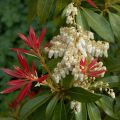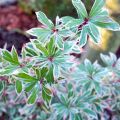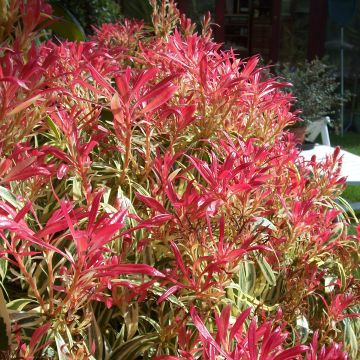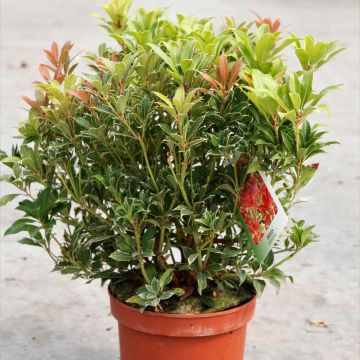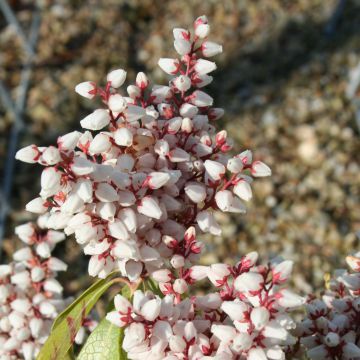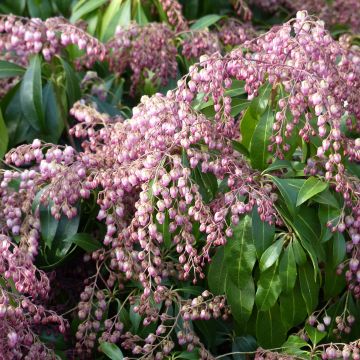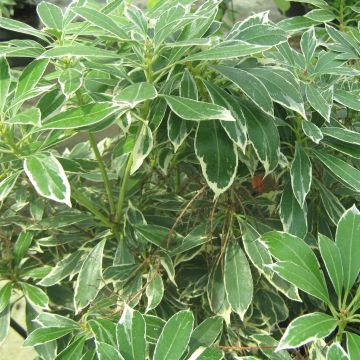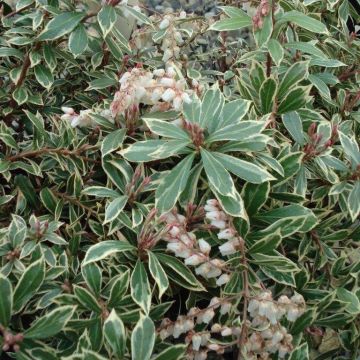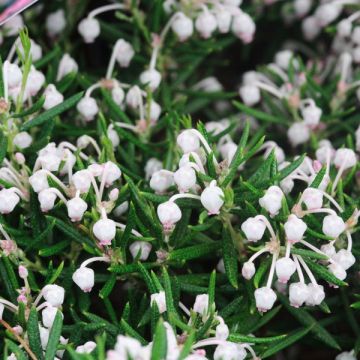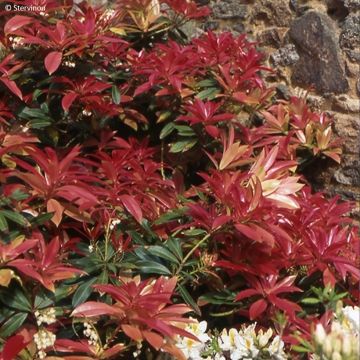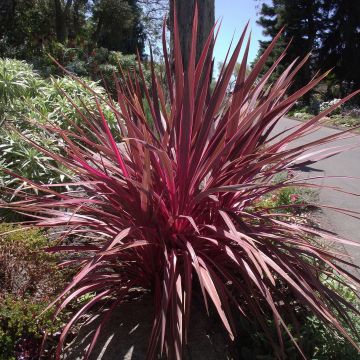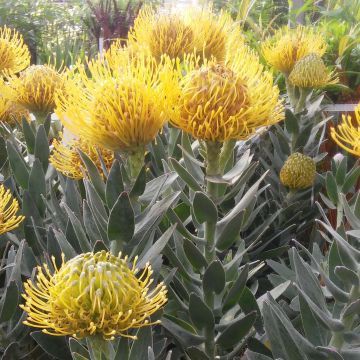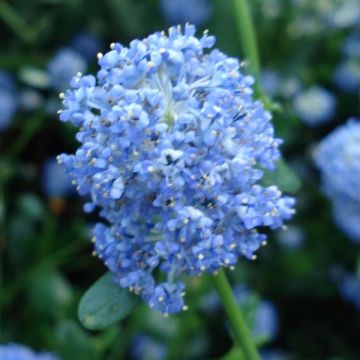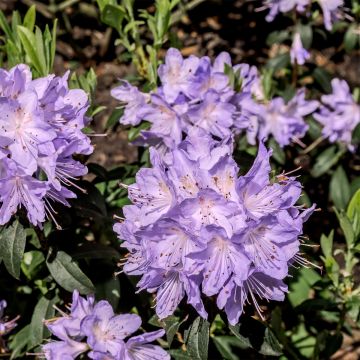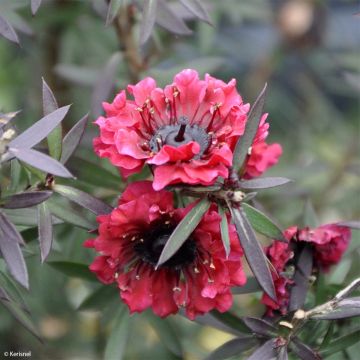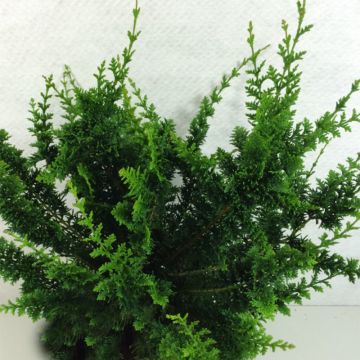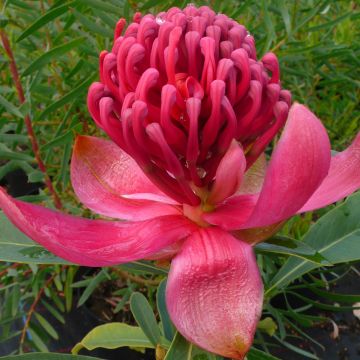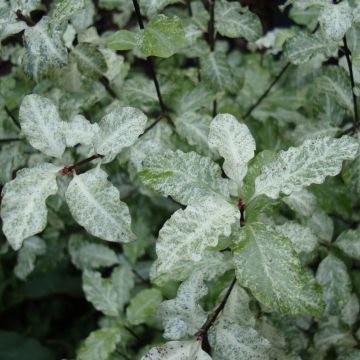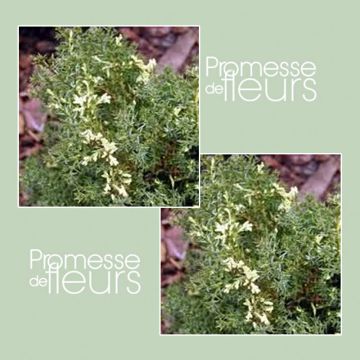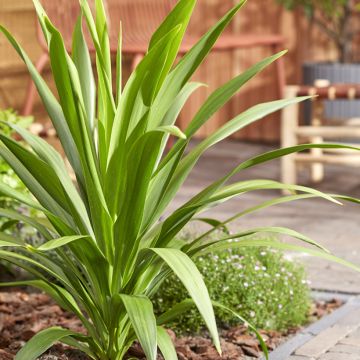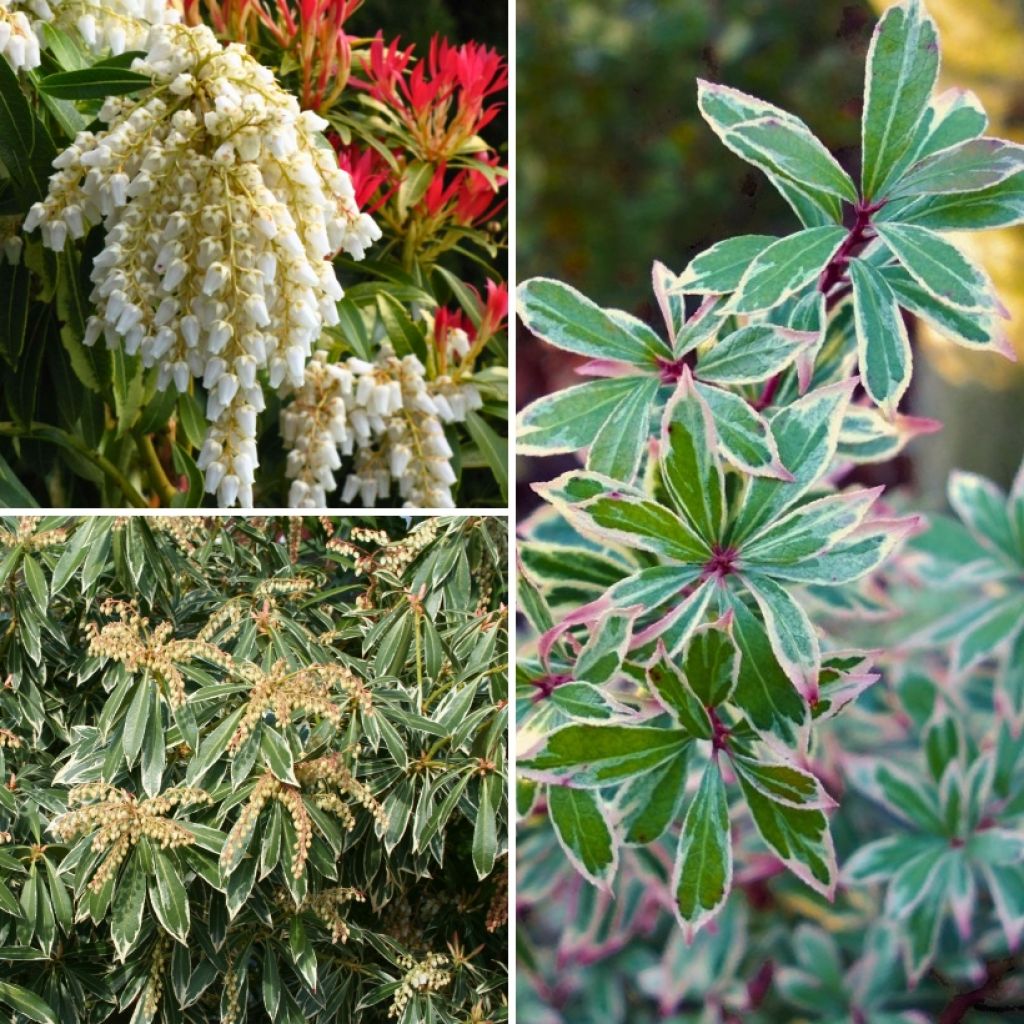

Pieris japonica Collection - Evergreen and Colourful Foliage for Shade
Pieris japonica Collection - Evergreen and Colourful Foliage for Shade
Pieris japonica Forest Flame, Little Frosty, Flaming Silver
Japanese Andromeda, Japanese Pieris, Lily-of-the-Valley Bush
This item cannot be shipped to the selected country
Delivery charge from €5.90
More information
Schedule delivery date,
and select date in basket
This plant carries a 24 months recovery warranty
More information
We guarantee the quality of our plants for a full growing cycle, and will replace at our expense any plant that fails to recover under normal climatic and planting conditions.
From €5.90 for pickup delivery and €6.90 for home delivery
Express home delivery from €8.90.
Does this plant fit my garden?
Set up your Plantfit profile →
Collection items (3 plants)
Description
Japanese Andromedas, known as Pieris japonica, are beautiful evergreen bushes for shade, to be grown in the garden or in pots. Appreciated for their colourful leaves and clusters of bell-shaped flowers, they mainly bloom in spring. These cold-resistant plants thrive in acidic, well-drained soil rich in humus. These bushes are irreplaceable for adding a touch of colour throughout the year.
Collection details
The collection consists of:
1 Pieris 'Forest Flame': a bush reaching a height of 1.5 m, with young spring foliage in bright red, turning green in summer. White flowering in generous clusters in April-May.
1 Pieris japonica 'Little Frosty': a particularly compact variety, reaching a height and width of 0.4 m, with bronze young shoots and dark green leaves margined with white. White flowering between May and June, depending on the climate.
1 Pieris japonica 'Flaming Silver': a bush of approximately 1.25 m in height and 80 cm in width, with dark green foliage finely edged with cream and young pink shoots. White flowering in spring.
Plant your Japanese Andromedas in spring or autumn, in shade or partial shade, in humus-rich, non-limestone soil. They can be used in the ground or in pots. In flower beds, place the tallest varieties at the back: 'Forest Flame' at the back, 'Flaming Silver' in the middle, and 'Little Frosty' at the front. Allow 2 to 3 plants per m², with a distance of 60 to 80 cm between each plant.
To enhance your Japanese Andromedas, associate them with Epimedium 'Amber Queen' with semi-evergreen leaves and yellow flowers in spring. Add Trillium luteum, with their yellow flowers and marbled leaves, for a sophisticated touch. In a different style, associate the pieris with Brunnera macrophylla 'Jack Frost'. Its silver leaves veined with green will brighten up the shaded corners of your garden. Place the Epimediums and Trilliums mixed in front of the Pieris, while the Brunnera can be planted as a carpet at the base of the bushes or lined up to form a border.
Report an error about the product description
Plant habit
Flowering
Foliage
Botanical data
Pieris
japonica
Forest Flame, Little Frosty, Flaming Silver
Ericaceae
Japanese Andromeda, Japanese Pieris, Lily-of-the-Valley Bush
Cultivar or hybrid
Other Pieris
Planting and care
The Pieris japonica grows in acidic soil, but rather fertile, remaining slightly moist in summer. Dig a hole about twice the size of the plant's root ball. You can add heather soil or peat to the planting if your soil is neutral, as this also helps to lighten it. It requires exposure to non-burning sun (morning) or partial shade and protection from cold drafts. Good mulching (with pine bark, for example) can help maintain soil acidity and moisture in summer.
If you have heavy and/or chalky soil, exclusively cultivate your Japanese Andromeda in a container and water it, preferably with non-chalky water. Otherwise, it is a low-maintenance plant that is rarely sick and should only be pruned when absolutely necessary.
Planting period
Intended location
Care
This item has not been reviewed yet - be the first to leave a review about it.
Evergreen shrubs
Haven't found what you were looking for?
Hardiness is the lowest winter temperature a plant can endure without suffering serious damage or even dying. However, hardiness is affected by location (a sheltered area, such as a patio), protection (winter cover) and soil type (hardiness is improved by well-drained soil).

Photo Sharing Terms & Conditions
In order to encourage gardeners to interact and share their experiences, Promesse de fleurs offers various media enabling content to be uploaded onto its Site - in particular via the ‘Photo sharing’ module.
The User agrees to refrain from:
- Posting any content that is illegal, prejudicial, insulting, racist, inciteful to hatred, revisionist, contrary to public decency, that infringes on privacy or on the privacy rights of third parties, in particular the publicity rights of persons and goods, intellectual property rights, or the right to privacy.
- Submitting content on behalf of a third party;
- Impersonate the identity of a third party and/or publish any personal information about a third party;
In general, the User undertakes to refrain from any unethical behaviour.
All Content (in particular text, comments, files, images, photos, videos, creative works, etc.), which may be subject to property or intellectual property rights, image or other private rights, shall remain the property of the User, subject to the limited rights granted by the terms of the licence granted by Promesse de fleurs as stated below. Users are at liberty to publish or not to publish such Content on the Site, notably via the ‘Photo Sharing’ facility, and accept that this Content shall be made public and freely accessible, notably on the Internet.
Users further acknowledge, undertake to have ,and guarantee that they hold all necessary rights and permissions to publish such material on the Site, in particular with regard to the legislation in force pertaining to any privacy, property, intellectual property, image, or contractual rights, or rights of any other nature. By publishing such Content on the Site, Users acknowledge accepting full liability as publishers of the Content within the meaning of the law, and grant Promesse de fleurs, free of charge, an inclusive, worldwide licence for the said Content for the entire duration of its publication, including all reproduction, representation, up/downloading, displaying, performing, transmission, and storage rights.
Users also grant permission for their name to be linked to the Content and accept that this link may not always be made available.
By engaging in posting material, Users consent to their Content becoming automatically accessible on the Internet, in particular on other sites and/or blogs and/or web pages of the Promesse de fleurs site, including in particular social pages and the Promesse de fleurs catalogue.
Users may secure the removal of entrusted content free of charge by issuing a simple request via our contact form.
The flowering period indicated on our website applies to countries and regions located in USDA zone 8 (France, the United Kingdom, Ireland, the Netherlands, etc.)
It will vary according to where you live:
- In zones 9 to 10 (Italy, Spain, Greece, etc.), flowering will occur about 2 to 4 weeks earlier.
- In zones 6 to 7 (Germany, Poland, Slovenia, and lower mountainous regions), flowering will be delayed by 2 to 3 weeks.
- In zone 5 (Central Europe, Scandinavia), blooming will be delayed by 3 to 5 weeks.
In temperate climates, pruning of spring-flowering shrubs (forsythia, spireas, etc.) should be done just after flowering.
Pruning of summer-flowering shrubs (Indian Lilac, Perovskia, etc.) can be done in winter or spring.
In cold regions as well as with frost-sensitive plants, avoid pruning too early when severe frosts may still occur.
The planting period indicated on our website applies to countries and regions located in USDA zone 8 (France, United Kingdom, Ireland, Netherlands).
It will vary according to where you live:
- In Mediterranean zones (Marseille, Madrid, Milan, etc.), autumn and winter are the best planting periods.
- In continental zones (Strasbourg, Munich, Vienna, etc.), delay planting by 2 to 3 weeks in spring and bring it forward by 2 to 4 weeks in autumn.
- In mountainous regions (the Alps, Pyrenees, Carpathians, etc.), it is best to plant in late spring (May-June) or late summer (August-September).
The harvesting period indicated on our website applies to countries and regions in USDA zone 8 (France, England, Ireland, the Netherlands).
In colder areas (Scandinavia, Poland, Austria...) fruit and vegetable harvests are likely to be delayed by 3-4 weeks.
In warmer areas (Italy, Spain, Greece, etc.), harvesting will probably take place earlier, depending on weather conditions.
The sowing periods indicated on our website apply to countries and regions within USDA Zone 8 (France, UK, Ireland, Netherlands).
In colder areas (Scandinavia, Poland, Austria...), delay any outdoor sowing by 3-4 weeks, or sow under glass.
In warmer climes (Italy, Spain, Greece, etc.), bring outdoor sowing forward by a few weeks.

































